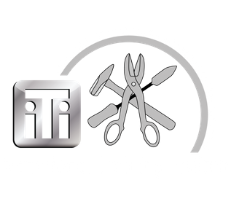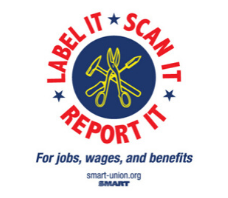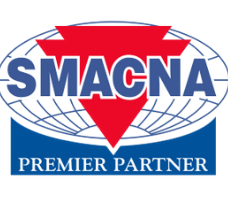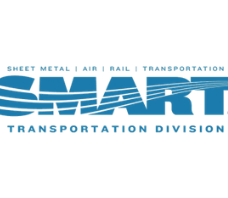
Better Wages and Benefits
It’s proven that workers who are trade union members earn more than non-unionized workers.
Personal Protection
Unions have got your back. Not only can they tell you your rights, they will defend your rights.
Health and Safety
With the backing of a union, you can say no to dangerous work without losing your job.
Solidarity
Trade unions have an incredible network. When you join a union, you join a global family.
Why Join SMART LOCAL 103?
![]() For more than 100 years, workers in the sheet metal industry have found that SMART Local 103 is best suited in understanding their needs, their industry, and their hopes and aspirations. Sheet Metal | Air | Rail | Transportation Union (S.M.A.R.T.) was one of the first unions in its industry to establish 100% employer-paid health insurance programs, employer-paid pension plans, industry health and safety programs, formalized apprenticeship and journeyman training, and excellent wage and working conditions.
For more than 100 years, workers in the sheet metal industry have found that SMART Local 103 is best suited in understanding their needs, their industry, and their hopes and aspirations. Sheet Metal | Air | Rail | Transportation Union (S.M.A.R.T.) was one of the first unions in its industry to establish 100% employer-paid health insurance programs, employer-paid pension plans, industry health and safety programs, formalized apprenticeship and journeyman training, and excellent wage and working conditions.
Membership Doesn’t Cost… It Pays!
What happens when you deserve a raise — or need a day off to take care of an unexpected emergency — or your employer has sold the company… or new equipment takes over your job… or working conditions on the job endanger your health?
It’s usually impossible, and always difficult, for an individual worker to go one-on-one with an employer when it’s necessary to protect your livelihood. The president of the company may not even be located in your community. Your supervisor knows you need to work — and the supervisor has the final word. One person’s voice just isn’t strong or loud enough to influence a large, impersonal organization.
Unions provide the responsible, united voice, which gives millions of wage and salary earners their proper share of participation in American industrial democracy.
Get Started Here
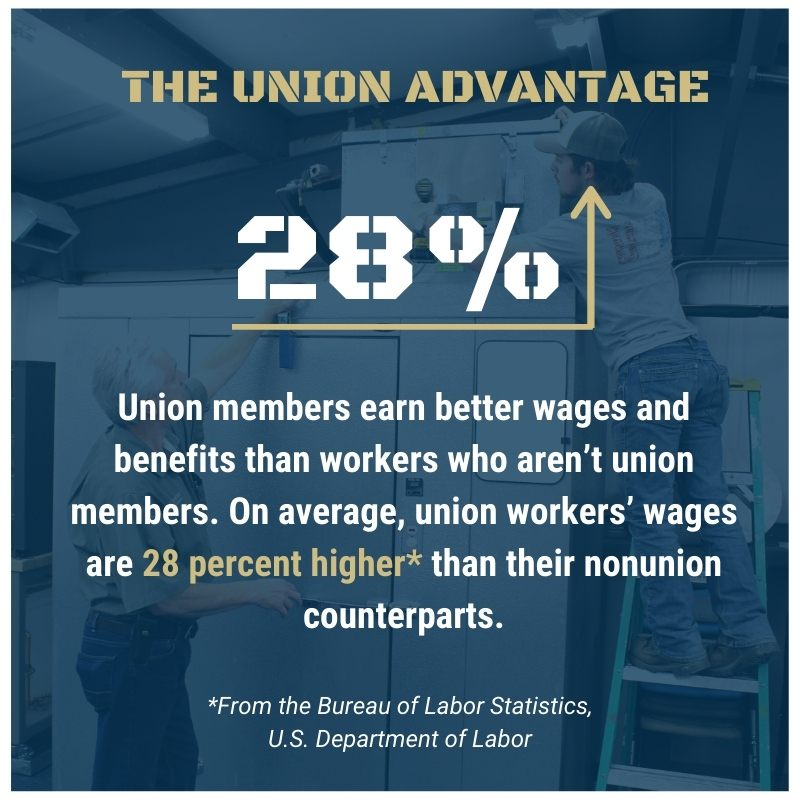

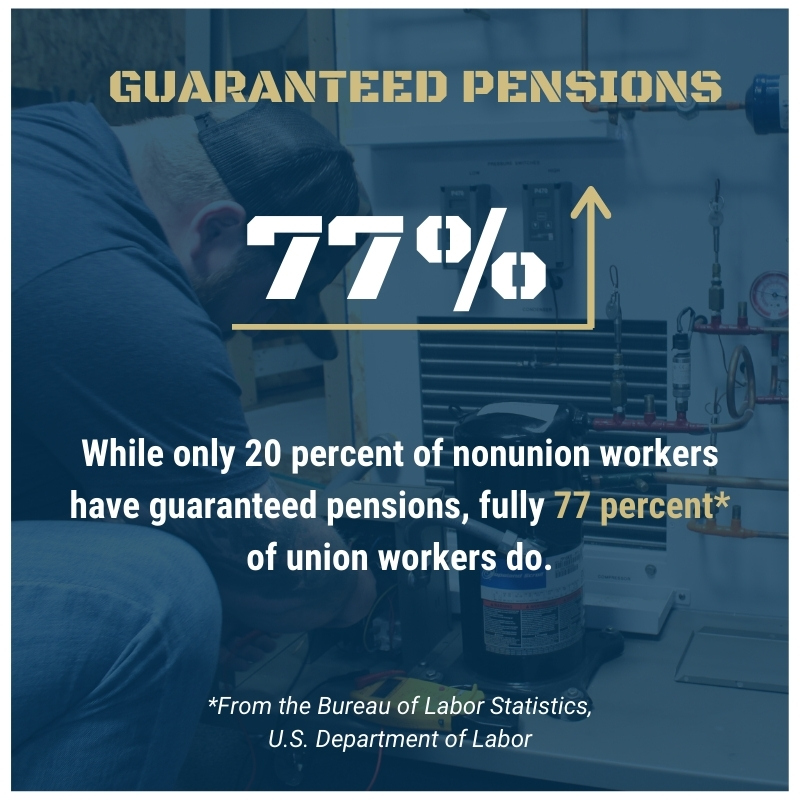

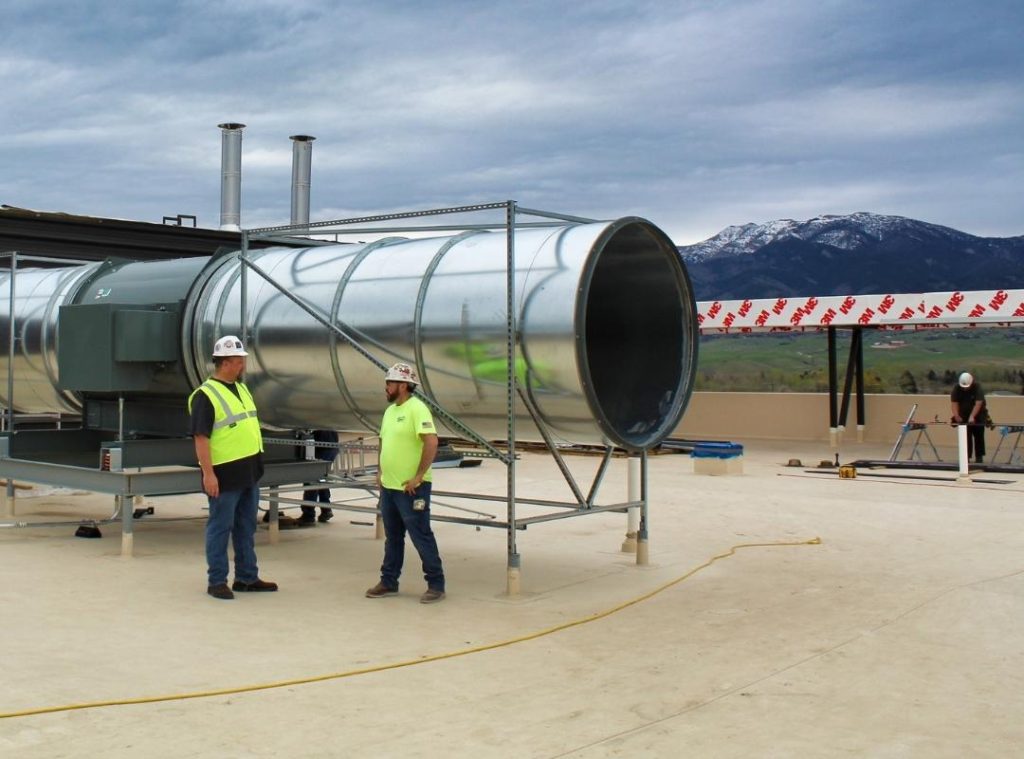
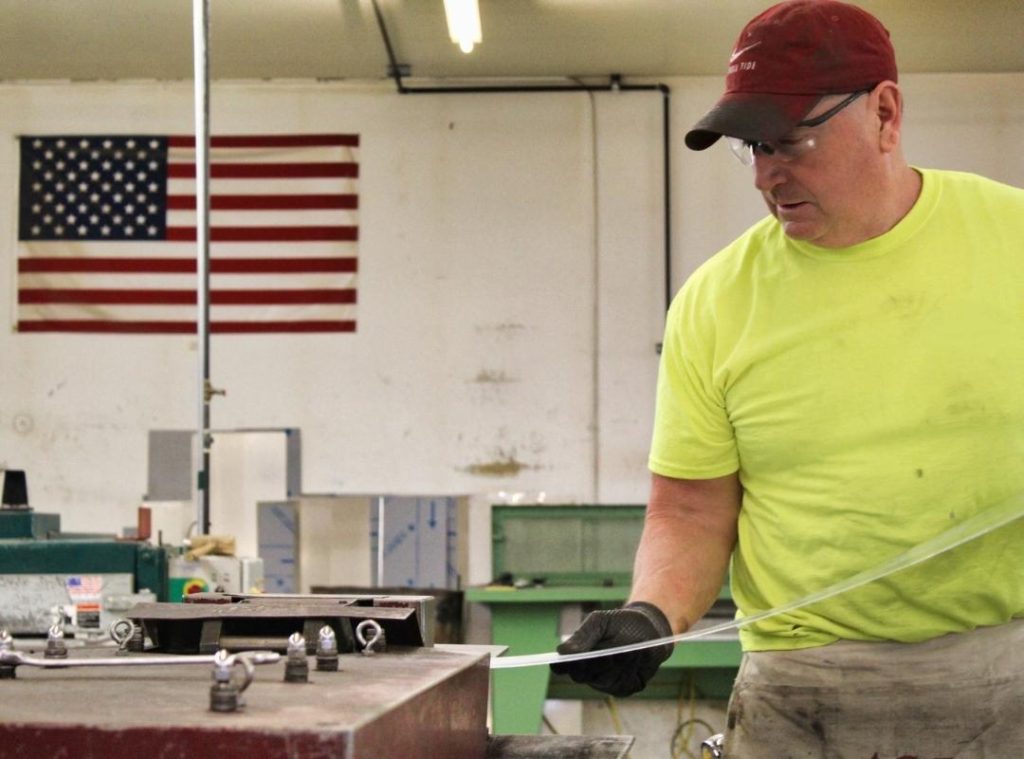
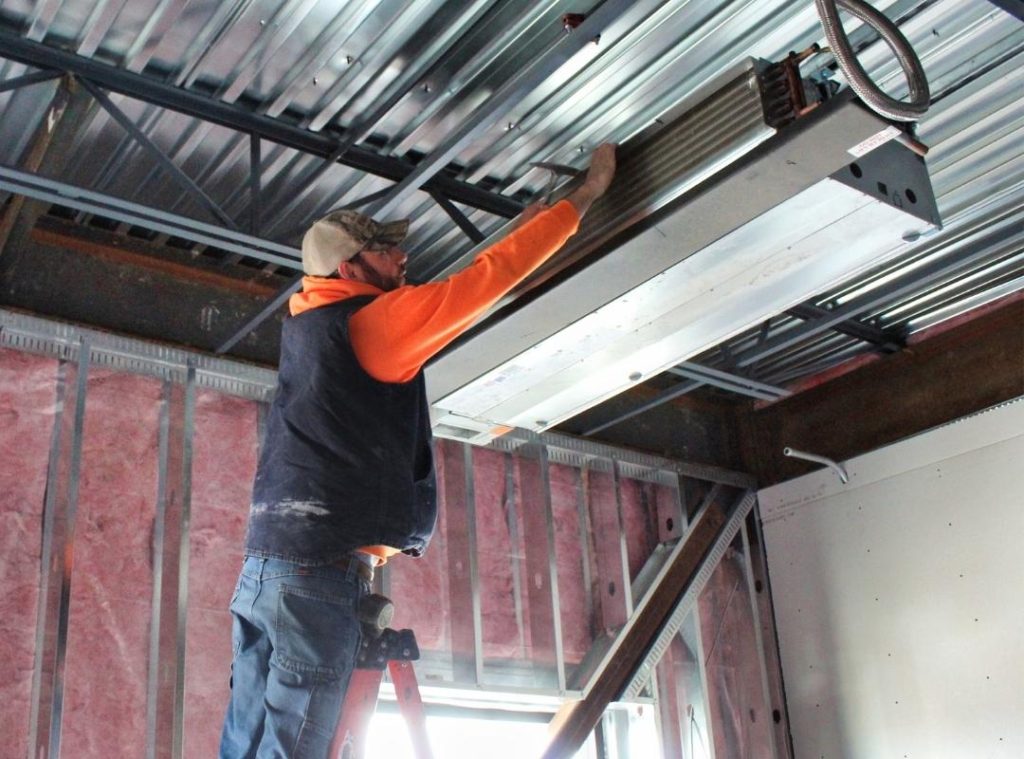
Joining SMART Local 103 offers a range of benefits that can significantly enhance the professional and personal lives of its members.
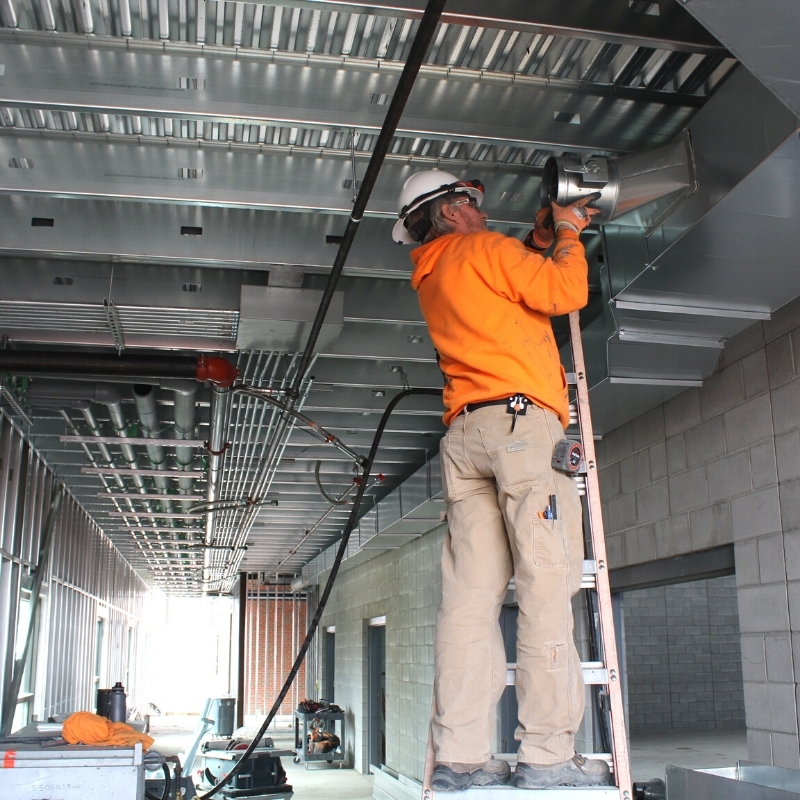
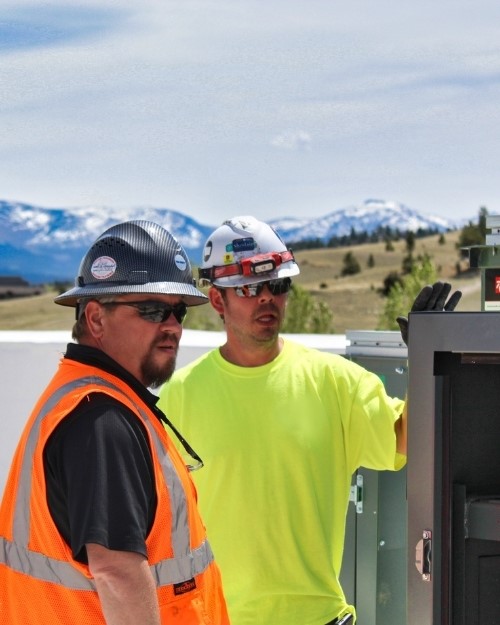
According to the U.S. Bureau of Labor Statistics (BLS), unionized workers earned 11% more on average compared to non-unionized workers in 2023. U.S. Bureau of Labor Statistics, "Union Members Summary," January 2023.
The Economic Policy Institute (EPI) reports that union workers are 30% more likely to have employer-provided health insurance compared to non-union workers. Economic Policy Institute, "The Benefits of Unionization," June 2020.
The union works to ensure that members have job security. This includes negotiating terms related to job stability and working conditions, as well as advocating for fair treatment in cases of disputes or layoffs. Unions work to ensure fair treatment of their members. They provide a structured process for addressing grievances, ensuring that workers are treated justly and have recourse if they face unfair practices or discrimination. Union contracts often include provisions that protect against arbitrary layoffs and ensure that any workforce reductions are handled according to established rules.
Data from the National Bureau of Economic Research (NBER) indicates that unionized workers are less likely to experience unfair treatment due to the structured grievance processes. National Bureau of Economic Research, "Labor Market Issues and Labor Unions," 2018.
The BLS shows that unionized workers generally have stronger protections against layoffs, often due to seniority provisions in union contracts. U.S. Bureau of Labor Statistics, "Union Membership and Wage Data," 2023.
Research from the Center for Economic and Policy Research (CEPR) found that unionized workers experience 25% fewer workplace injuries. Center for Economic and Policy Research, "The Benefits of Unions: A Study of Workplace Safety," 2020.
The National Skills Coalition found that unionized workers are 45% more likely to receive job-related training compared to non-union workers. National Skills Coalition, "Training and Skills Development in Unionized Workplaces," 2019.
According to the BLS, unionized workers are 20% more likely to have access to formal grievance procedures. U.S. Bureau of Labor Statistics, "Union Membership and Grievance Procedures," 2023.
Data from the AFL-CIO indicates that union members have better access to legal resources for resolving employment issues. American Federation of Labor and Congress of Industrial Organizations (AFL-CIO), "Union Legal Support," 2022.
The AFL-CIO reports that union workers are 30% more likely to participate in job-related training. American Federation of Labor and Congress of Industrial Organizations (AFL-CIO), "Union Training Programs," 2021.
Union apprenticeship programs have a 45% higher completion rate. U.S. Department of Labor, "Apprenticeship Programs: Union vs. Non-Union Completion Rates," 2022.
The Economic Policy Institute (EPI) reports that unions have successfully advocated for stronger labor laws and safety regulations. Economic Policy Institute, "The Role of Unions in Shaping Labor Policy," 2020.
The BLS indicates that unionized industries often see significantly higher improvements in working conditions due to collective bargaining. U.S. Bureau of Labor Statistics, "Union Impact on Industry Standards," 2023.
Union membership provides access to extensive professional networks. Bureau of Labor Statistics, "Networking Benefits for Union Members," 2022.
Gallup surveys show that union members report higher job satisfaction and a greater sense of belonging. Gallup, "Union Membership and Job Satisfaction," 2021.
Union contracts often ensure reasonable working hours and overtime pay. U.S. Bureau of Labor Statistics, "Unionized Workers and Work Hours," 2023.
The Economic Policy Institute (EPI) indicates that union workers are 30% more likely to have paid leave benefits. Economic Policy Institute, "Union Benefits: Paid Leave and More," 2022.
